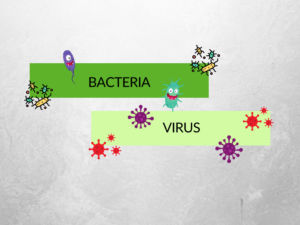An In-depth Comparison of Lytic and Lysogenic Cycle
Introduction: Welcome to this comprehensive guide on the lytic and lysogenic cycles. These cycles are two distinct ways in which viruses replicate and interact with host cells. In this article, we will explore the characteristics, examples, uses, and differences between the lytic and lysogenic cycles to help you better understand these fundamental concepts in virology.
What is the Lytic Cycle?
The lytic cycle is a viral replication process resulting in the destruction of the host cell. It involves the following stages:
- Attachment: The virus attaches to the host cell’s surface receptors.
- Penetration: The virus injects its genetic material into the host cell.
- Biosynthesis: The viral genome utilizes the host’s cellular machinery to produce viral components.
- Assembly: Viral components assemble to form complete virions.
- Release: The host cell bursts, releasing newly formed virions.
Examples of the Lytic Cycle:
Some well-known examples of viruses that undergo the lytic cycle include:
- Influenza virus
- Herpes simplex virus
- Rabies virus
Uses of the Lytic Cycle:
The lytic cycle is essential for the spread and transmission of viruses. Understanding this cycle helps in developing antiviral treatments and vaccines. It also aids in studying viral pathogenesis and host immune responses.
What is the Lysogenic Cycle?
The lysogenic cycle is a viral replication process where the viral genome integrates into the host cell’s genome and replicates passively along with it. It involves the following stages:
- Attachment: The virus attaches to the host cell’s surface receptors.
- Penetration: The virus injects its genetic material into the host cell.
- Integration: The viral genome integrates into the host cell’s DNA.
- Replication: The integrated viral genome replicates along with the host cell’s genome.
- Induction: Under certain conditions, the viral genome switches to the lytic cycle, leading to the production and release of new virions.
Examples of the Lysogenic Cycle:
Common examples of viruses that undergo the lysogenic cycle include:
- Bacteriophage lambda
- HIV (Human Immunodeficiency Virus)
- Epstein-Barr virus
Uses of the Lysogenic Cycle:
The lysogenic cycle plays a crucial role in the long-term survival and persistence of viruses within host populations. It allows for the transfer of genetic material between different species, resulting in genetic diversity and potentially new virulent strains. Furthermore, studying the lysogenic cycle aids in understanding the mechanisms of viral latency and chronic infections.
Differences between Lytic and Lysogenic Cycle:
| Difference Area | Lytic Cycle | Lysogenic Cycle |
|---|---|---|
| Cellular Destruction | Destruction of host cell | No cellular destruction |
| Genome Integration | No genome integration | Integration into host genome |
| Replication Strategy | Active replication | Passive replication along with host genome |
| Expression of Viral Genes | Immediate expression | Expression can be delayed or suppressed |
| Viral Latency | No latency | Allows for viral latency |
| Transmission Efficiency | High transmission efficiency | Lower transmission efficiency |
| Host Cell Survival | Host cell dies | Host cell survives |
| Examples | Influenza, herpes simplex, rabies | Bacteriophage lambda, HIV, Epstein-Barr virus |
| Antiviral Treatment | Targeted by antiviral drugs | More challenging to target |
| Generation of New Virions | Immediate production and release | Production and release can be delayed |
Conclusion:
In summary, the lytic cycle involves active replication and destruction of the host cell, while the lysogenic cycle involves passive replication and integration into the host genome. The lytic cycle leads to immediate production and release of new virions, whereas the lysogenic cycle can result in viral latency and the transfer of genetic material. Understanding these differences is crucial for comprehending viral infections, vaccine development, and antiviral treatment strategies.
People Also Ask:
- Q: What are the similarities between the lytic and lysogenic cycles?
- Q: Can a virus switch from the lytic cycle to the lysogenic cycle?
- Q: How do lysogenic viruses contribute to genetic diversity?
- Q: Are there any health risks associated with lysogenic viruses?
- Q: Can the lysogenic cycle be beneficial to the host organism?
A: Both cycles involve viral attachment, penetration, and the use of host cell machinery for replication.
A: Yes, some viruses can switch from the lytic to the lysogenic cycle under specific conditions.
A: By integrating their genome into the host genome, lysogenic viruses can transfer genetic material between different species, leading to genetic diversity.
A: Lysogenic viruses can potentially reactivate from a latent state, causing disease or contributing to the development of certain cancers.
A: While rare, some integrated viral genes can provide advantages to the host organism, such as enhanced immunity against other viruses.


